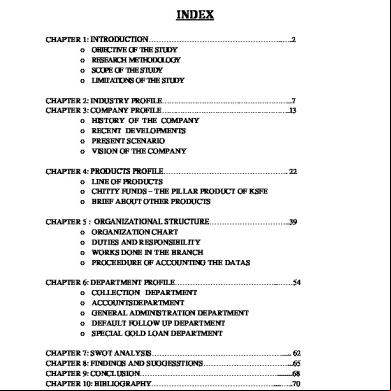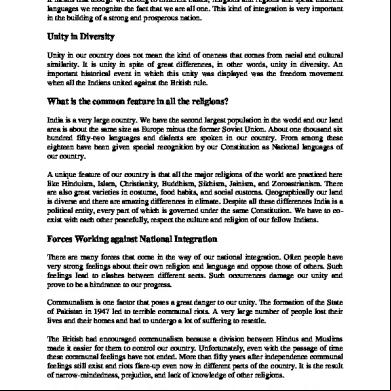Significant Linguistic Features Of Middle English 6mf2r
This document was ed by and they confirmed that they have the permission to share it. If you are author or own the copyright of this book, please report to us by using this report form. Report 3i3n4
Overview 26281t
& View Significant Linguistic Features Of Middle English as PDF for free.
More details 6y5l6z
- Words: 324
- Pages: 2
Significant Linguistic Features of Middle English A comparison of English texts written in the tenth or eleventh centuries with those produced in the late twelth or early thirteenth reveals the following differences between Old and Middle English:
phonological o Old-English diphthongs become Middle English monophthongs, e.g. on heofonum -> in hevene; o new diphthongs emerge in the Middle English period, e.g. dæg > dai, day; o Initial [h] before consonants disappears in the Middle English period, e.g. hræven -> raven; o [f, v] and [s, z] , which were allophones in the Old-English period, become phonemes; 1.1 o unstressed vowels in the inflectional endings become [@] . morphological o the complete Old-English inflectional system is simplified in Middle English; o loss of the strong inflexion of adjectives; o loss of grammatical gender; o emergence of the unified definite article `the.' syntactical o replacement of the case functions by a fixed word order and prepositions. lexical o first borrowing of French loan-words; o increased emergence of Scandinavian loan-words. graphological 1.2 o disappearance of Old English writing conventions; o increased use of Latin and Anglo-Norman.
In general, Old English might be called a synthetic language, which uses inflectional morphemes to express the syntactical relationships. Middle English might be called an analytical language, which uses function words to constitute syntactical relationships. Compare: Old English ealle ealdras þæra sacerda and folces writeras with Middle English alle the prynces of prestis, and scribis of the puple. (The same difference holds more or less between Modern High German and Modern English.)
The transition from Middle to Early Modern English is characterized by the following developments:
the first phase of the Great Vowel Shift is completed; the unstressed inflectional vowels become mute; the inflectional endings are reduced to {-s, -st, -th}; London English is more and more regarded as the standard variety; huge extension of the vocabulary by borrowing and word-formation.
phonological o Old-English diphthongs become Middle English monophthongs, e.g. on heofonum -> in hevene; o new diphthongs emerge in the Middle English period, e.g. dæg > dai, day; o Initial [h] before consonants disappears in the Middle English period, e.g. hræven -> raven; o [f, v] and [s, z] , which were allophones in the Old-English period, become phonemes; 1.1 o unstressed vowels in the inflectional endings become [@] . morphological o the complete Old-English inflectional system is simplified in Middle English; o loss of the strong inflexion of adjectives; o loss of grammatical gender; o emergence of the unified definite article `the.' syntactical o replacement of the case functions by a fixed word order and prepositions. lexical o first borrowing of French loan-words; o increased emergence of Scandinavian loan-words. graphological 1.2 o disappearance of Old English writing conventions; o increased use of Latin and Anglo-Norman.
In general, Old English might be called a synthetic language, which uses inflectional morphemes to express the syntactical relationships. Middle English might be called an analytical language, which uses function words to constitute syntactical relationships. Compare: Old English ealle ealdras þæra sacerda and folces writeras with Middle English alle the prynces of prestis, and scribis of the puple. (The same difference holds more or less between Modern High German and Modern English.)
The transition from Middle to Early Modern English is characterized by the following developments:
the first phase of the Great Vowel Shift is completed; the unstressed inflectional vowels become mute; the inflectional endings are reduced to {-s, -st, -th}; London English is more and more regarded as the standard variety; huge extension of the vocabulary by borrowing and word-formation.










